¿Cómo plantar semillas de hierba? Aprende el secreto de un césped perfecto
¿Soñando con un hermoso y verde césped? La semilla de césped correcta y el mantenimiento adecuado son la clave del éxito. Aprende cómo y cuándo plantar las semillas de hierba para que se vean perfectas en tu jardín. Aprende cómo funcionan las semillas de césped autorreparadoras y utiliza algunos consejos y trucos para crear el césped con el que siempre has soñado.

Tipos de semillas de hierba para plantar en su jardín
Hay varias especies de césped que suelen plantarse en los jardines. La división entre céspedes altos y cortos es la más popular. Sin embargo, no todas las hierbas cortas son adecuadas para todos los jardines. La situación es similar para las hierbas altas. Se aconseja que el tipo de semilla de césped sea adecuado para el propósito del césped. De este modo, podrá estar seguro de que obtendrá los resultados más satisfactorios al plantar semillas de césped.
Consulte los tipos de césped más populares que crecerán mejor en su jardín. Aprenda cuándo plantar semillas de césped y qué errores debe evitar para conseguir un césped bonito.
Hierba común - una semilla de hierba clásica para su jardín
El césped común es el tipo de semilla de césped más popular en los jardines. Su mayor ventaja es el aspecto estético y el hermoso color verde. Es bastante corta y fácil de cortar, por lo tanto es una base perfecta para un césped parejo y bien cuidado que será objeto de celos de sus vecinos.
- Festuca de oveja - una especie de crecimiento lento, altamente resistente a las condiciones atmosféricas y climáticas, con un extenso sistema de raíces. Este tipo de semilla de hierba debe plantarse en suelo ácido, con un buen acceso a la luz solar.
- Festuca roja rastrera - hierba de rápido crecimiento, resistente al pisoteo y a las condiciones climáticas. Tiene hojas bastante finas, aunque crece en grupos, lo que contribuye al rápido desarrollo del césped.
- Festuca común - esta especie no es muy exigente en cuanto a su cultivo. Tiene hojas cortas y delgadas, y es muy fácil de cortar.
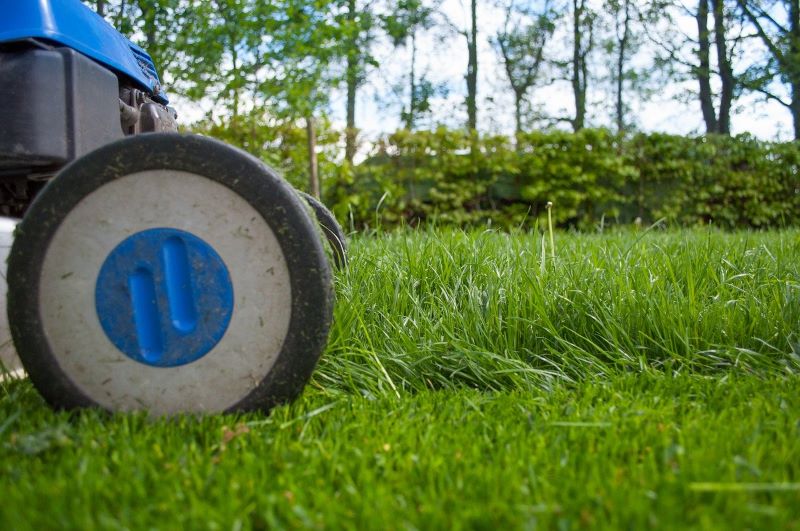
La hierba de la pradera - una idea inusual de césped
La semilla de hierba de la pradera (poa) es una elección muy original, ya que se caracteriza por su rico florecimiento. Se puede usar para plantar hierba en su jardín. Las hojas son bastante altas y exuberantes, con muchas flores. De esta manera se puede lograr un aspecto artístico y desordenado de su césped con un efecto muy natural. Las especies populares usadas como césped de pradera son:
- Festuca de la pradera - una especie popular de hierba de la pradera alta, que alcanza hasta un metro. Este tipo de hierba es perfecta para el jardín de flores, así como para llenar los espacios en un jardín de rocas.
- Hierba azul - césped con hojas de color verde oscuro, que alcanza hasta 70 cm de altura. Florece desde mediados de primavera hasta finales de verano.
- Césped de algodón común - una especie de altura moderada, que alcanza hasta 40 cm. Florece con flores redondas, grises y esponjosas características.

La hierba de los prados tiene un aspecto impresionante, pero tiene desventajas. Debido a un gran número de flores, la plantación de semillas de césped de este tipo podría ser perjudicial para los alérgicos - especialmente los alérgicos a las flores de primavera.
Césped ornamental para el jardín de rocas
El césped ornamental es el más alto y uno de los más imponentes tipos de semillas de césped utilizados en los jardines. Lo que la diferencia de otros tipos populares es su inusual tinte multicolor. El periodo de floración tampoco es habitual en este caso. Este tipo de césped queda perfecto en un parterre y en una maceta con otras plantas. Sin embargo, no puede utilizarse para un césped típico en todo el jardín.

Una de las especies más populares de hierba ornamental es la hierba de junco de plumas, que es un cruce entre dos plantas relacionadas: Calamagrostis Arundinacea y Calamagrostis Epigejos (hierba pequeña de madera). Alcanza hasta 1,5 metros, y se parece a las plantas de grano.
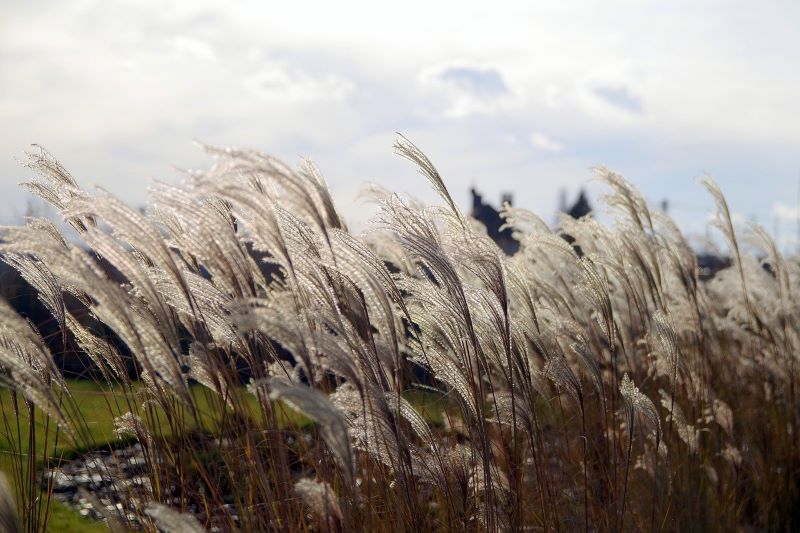
La hierba de la pampa es otra especie inusual, aunque a veces se clasifica como un arbusto ornamental.
¿Qué es la hierba autorreparadora y cómo funciona la muerte?
La hierba autorreparadora es un verdadero fenómeno de jardinería. Lo que lo hace diferente de cualquier otro tipo de semilla de hierba es el proceso único de crecimiento y propagación.
La semilla de hierba autorreparadora puede hacer crecer varias hojas de un solo grano, y entonces empiezan a extenderse. Ocurre tanto vertical como horizontalmente, formando gruesos racimos de hierba. Los tipos tradicionales de hierba también forman racimos que se extienden, sin embargo su número sigue siendo el mismo. La semilla de hierba autorreparadora hace que el césped piense y sea exuberante en muy poco tiempo.
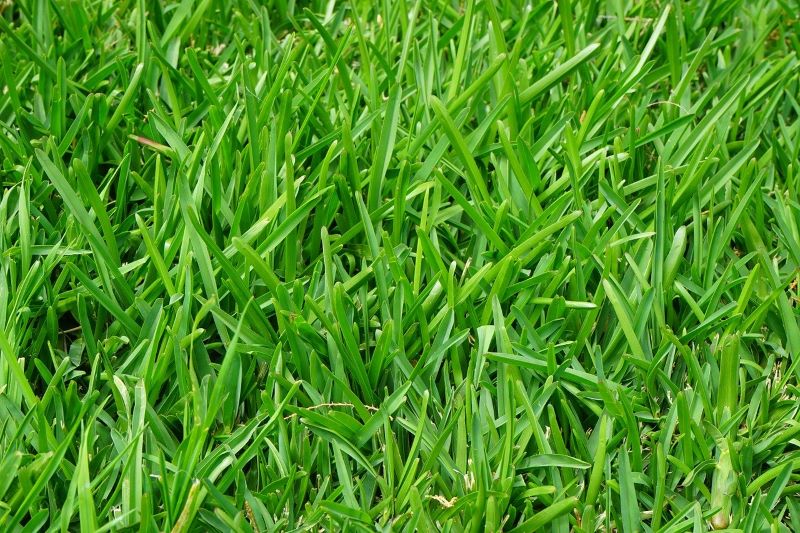
El césped autorreparador es una gran superficie para un césped muy usado. Por esta razón es una solución perfecta para un jardín con niños. Este tipo de semillas de césped también es muy resistente a las condiciones atmosféricas, por lo que puede sobrevivir a fuertes lluvias y heladas.
Hierba autorreparadora - precio
El precio de la semilla de hierba autorreparadora difiere según varios factores. Uno de los más significativos es el fabricante. Las semillas de hierba de buena calidad que se autorreparan pueden costar incluso el doble que las de otros tipos. Cuando se elige una marca en particular, hay que decidir si el criterio principal es la calidad o la cantidad.
El tamaño de la bolsa también es crucial. Un paquete de un kilogramo de semillas de césped autorreparables podría ser suficiente para un jardín pequeño, definitivamente no es suficiente para un jardín grande.
¿Cómo plantar semillas de hierba? Preparando el terreno
El proceso de preparación del terreno antes de plantar las semillas de hierba consiste en varios pasos. Es muy importante para el crecimiento de la hierba. Lo primero que hay que hacer es ordenar el sitio. Debes recoger los restos y la basura que queda en él y hacer la limpieza. Todos estos factores pueden afectar la acidez del suelo e influir en el crecimiento de la semilla de hierba.
Si el sitio no se limpia a fondo, puede dar lugar a un crecimiento deficiente de la hierba; puede crecer amarilla o seca.

Otro paso en el proceso de preparación del suelo es romper el suelo y probar su acidez. Es un buen indicador de qué tipo de semillas de hierba se debe elegir para un determinado tipo de suelo. Para obtener los mejores resultados, el suelo debe ser fértil, aireado y debe tener una humedad moderada.
La acidez puede ser analizada de dos maneras: enviando una muestra a un laboratorio o usando un acidímetro especial. La mejor acidez de un suelo para semillas de hierba es de 5,5 - 6,5 pH.
Fertilizar el suelo antes de sembrar el césped
Asegúrese de fertilizar el suelo durante una semana antes de plantar la semilla de hierba. Para ello, utilice un iniciador o un fertilizante universal. Puede comprar ambos en un centro de jardinería. Mézclelo con la tierra según las instrucciones del fabricante.
El último paso, pero igualmente importante, de preparar la tierra antes de plantar las semillas de hierba es rodar la tierra. Esto ayuda a nivelar la superficie para plantar y espesa la tierra.
Plantando semillas de hierba - ¿cómo hacerlo?
Un método popular y rápido para plantar semillas de hierba es hacerlo manualmente. Implica sembrar el grano usted mismo. Para hacerlo, debes dividir el terreno preparado en varias partes iguales.
Cuando se plantan semillas de hierba, se aconseja hacerlo en forma transversal. De esta manera el grano se distribuye uniformemente, y la hierba puede alcanzar una densidad óptima. Para facilitar las cosas, comience a sembrar en una dirección, y a medida que regrese, distribuya el resto en sentido contrario. Rastrille el suelo a fondo después. Ayuda a cubrir las semillas con tierra, lo que protegerá a los brotes de las condiciones climáticas.
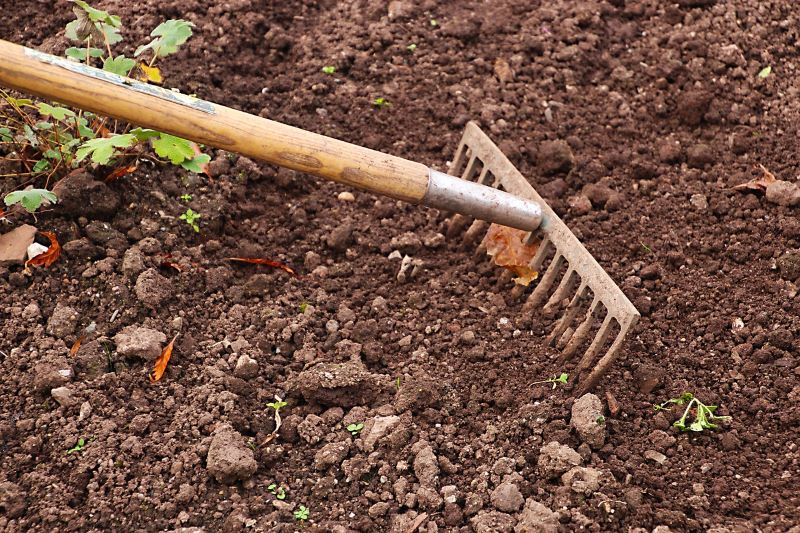
Un paso importante es la solidificación del suelo después de plantar semillas de hierba. Puedes hacerlo usando una tabla plana. Asegura que la semilla no sea arrastrada por el viento.
¿Cómo regar las semillas de césped sembradas?
Otra parte muy importante es regar el césped. Para hacerlo correctamente, vierta un pequeño chorro de agua en el suelo. La forma más fácil es usar una manguera de jardín. Regar el césped regularmente durante dos semanas después de plantar las semillas. El mejor momento para regar el césped es muy temprano en la mañana o al atardecer, cuando no hay sol que pueda quemar las semillas. El riego regular hace que el césped y sus raíces crezcan más rápido.
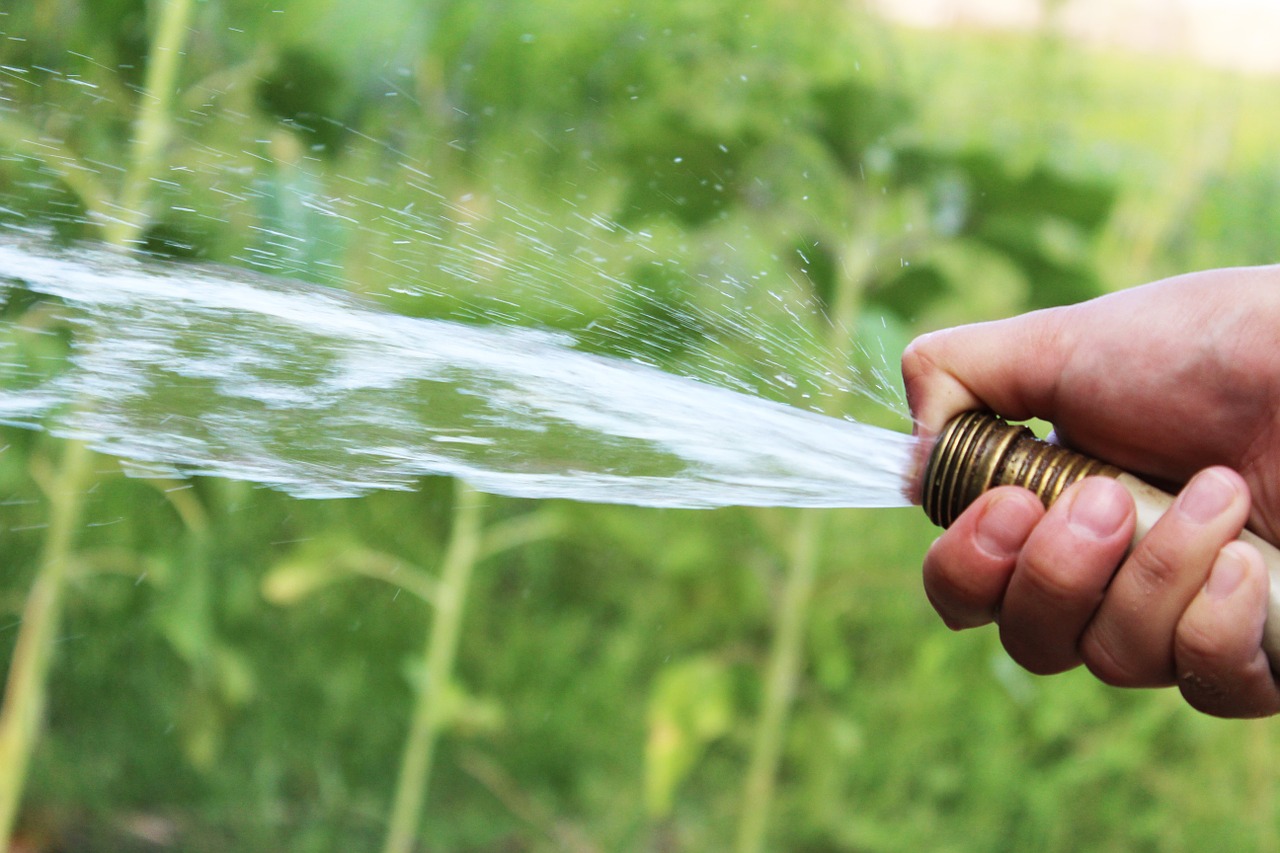
¿Cuándo plantar semillas de hierba?
Si quieres que tu césped sea verde y exuberante, intenta plantar semillas de hierba en meses concretos. ¿Cuándo plantar semillas de hierba para que crezcan rápido y bien?
La mayoría de las especies de semillas de hierba requieren la plantación en otoño. Es la mejor estación, sobre todo debido a las condiciones climáticas y del suelo, características de esta parte del año. Plantar las semillas de hierba de agosto a octubre protege las semillas de las fuertes lluvias y las altas temperaturas. Además, la humedad del suelo alienta a la hierba a brotar y crecer.

¿Se pueden plantar semillas de césped en primavera?
Otra buena época para plantar semillas de césped es el principio de la primavera. El mejor periodo para hacerlo es entre abril y junio. Las condiciones meteorológicas son el factor más importante, así que preste atención no sólo a un mes concreto, sino también a la temperatura. En caso de que se produzcan heladas a principios de la primavera, probablemente debas posponer la plantación de semillas de césped. Puedes hacerlo en mayo y junio, pero ten en cuenta que debes elegir la mezcla adecuada.
Algunos propietarios de jardines deciden plantar semillas de hierba en marzo. Sin embargo, no es la mejor idea desde el punto de vista de la jardinería. Aunque hay algunas especies que son resistentes a las condiciones atmosféricas - por ejemplo, algunos tipos de hierbas ornamentales, plantar semillas de hierba tan pronto podría resultar en un crecimiento deficiente.
Los errores más comunes cometidos al plantar semillas de hierba
Cuando prepares tu césped, debes prestar mucha atención a cada detalle del proceso. En primer lugar, recuerden todas las reglas para preparar el terreno, sembrar y seguir cuidando el césped. Muy a menudo, incluso los más pequeños errores pueden afectar el crecimiento adecuado del césped.
Los errores más comunes son:
- Suelo mal preparado y no eliminar todos los elementos que puedan afectar al crecimiento.
- No aflojar el suelo - lo que ayuda a la eliminación de los residuos de las plantas que solían crecer en la zona.
- Insuficiente remoción de cualquier maleza de la zona en la que se va a plantar la semilla de hierba. Si hay muchas malezas, es posible que tenga que utilizar un herbicida, que eliminará las plantas del suelo.
- No enriquecer el suelo - algunos tipos de suelo requieren de un fertilizante adicional. Es particularmente importante en el caso de los suelos arenosos, donde se debe utilizar una mezcla especial de turba o compost.
- Eligiendo semillas de hierba equivocadas, que no son adecuadas para el césped de jardín, sino más bien para la hierba de pradera.
- Plantación desigual, que resulta en un césped de aspecto poco estético.
- No asegurar la semilla después de la plantación, especialmente cuando el tiempo es ventoso, lo que puede hacer que la semilla se pierda.
- Insuficiente cantidad de agua, lo que impide que las semillas broten y crezcan adecuadamente.
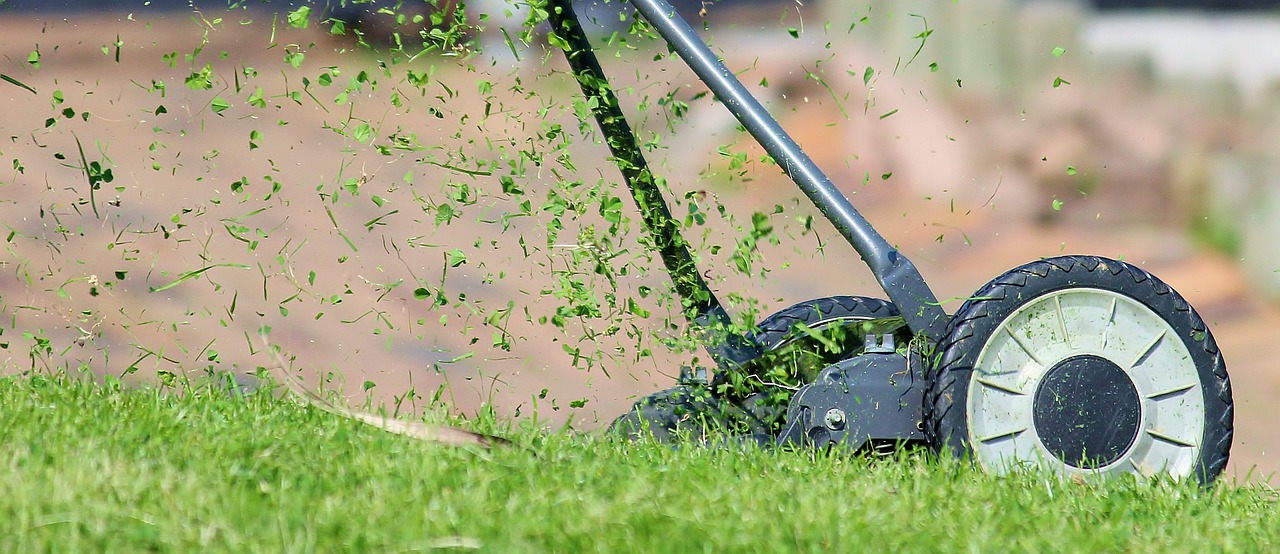
📍 ¿Cuándo sembrar el césped en primavera?
Los mejores meses para plantar semillas de hierba son desde abril hasta finales de junio. Si decide plantar semillas de hierba en primavera, preste especial atención a las condiciones atmosféricas. Si hay heladas, posponga la siembra hasta el otoño.
📍 ¿Cómo se cultiva un césped de flores silvestres?
Planifique la plantación de semillas de hierba de acuerdo con las especies que quiera incluir. Podrías elegir la primavera o el otoño para hacer esto. Considere los requisitos de suelo de la semilla de hierba y su nivel de resistencia.
Artículos destacados




